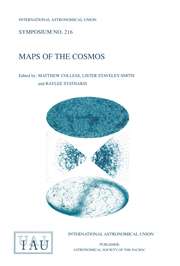Article contents
Static versus Dynamical Cosmic-ray Halos
Published online by Cambridge University Press: 03 August 2017
Abstract
The dynamical halo of the Galaxy offers a natural explanation for the form of the variation of cosmic-ray path length with energy. The variation above 1 GeV per nucleon can be understood as due to the variation of the diffusion coefficient, and hence the resident time in the galaxy, with energy. The flattening of the curve below 1 GeV per nucleon is seen to mark a transition to a convection dominated regime where the variation of the diffusion coefficient is no longer a determining factor. It is possible that the random motion of the cosmic rays about the galaxy that prevents us from seeing their sources in a clear manner may enable us to extract information about the galaxy at large and learn something about its large scale motions.
- Type
- III. Theory and Modelling
- Information
- Copyright
- Copyright © Kluwer 1991
References
REFERENCES
- 1
- Cited by


